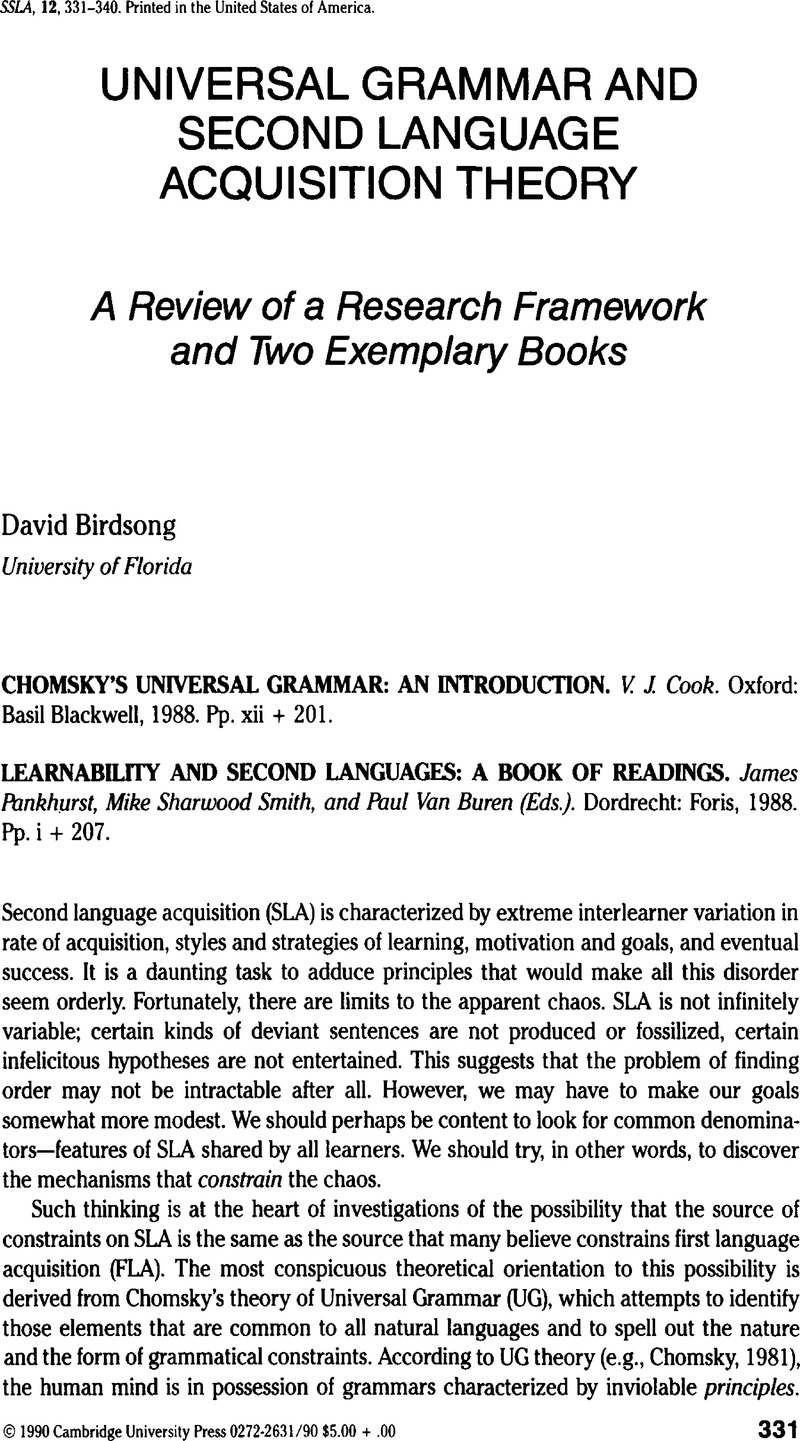Crossref Citations
This article has been cited by the following publications. This list is generated based on data provided by Crossref.
Mitchell, Rosamond
1986.
Current Trends in Second Language Classroom Research.
South African Journal of Linguistics,
Vol. 4,
Issue. 2,
p.
1.
Mitchell, Rosamond
and
Brumfit, Christopher
1991.
Research in applied linguistics relevant to language teaching: 1990.
Language Teaching,
Vol. 24,
Issue. 3,
p.
137.
Rixon, Shelagh
1992.
English and other languages for younger children: practice and theory in a rapidly changing world.
Language Teaching,
Vol. 25,
Issue. 2,
p.
73.
Quintero, Kate Wolfe
1992.
Learnability and the Acquistion of Extraction in Relative Clauses andWh-Questions.
Studies in Second Language Acquisition,
Vol. 14,
Issue. 1,
p.
39.
Mitchell, Rosamond
1996.
Current Trends in Second Language Classroom Research.
Southern African Journal of Applied Language Studies,
Vol. 4,
Issue. 2,
p.
1.
Duffield, Nigel
and
White, Lydia
1999.
Assessing L2 knowledge of Spanish clitic placement: converging methodologies.
Second Language Research,
Vol. 15,
Issue. 2,
p.
133.





